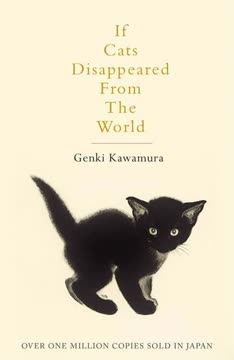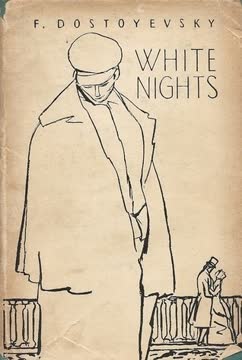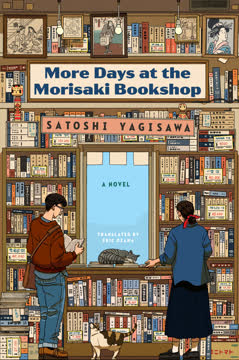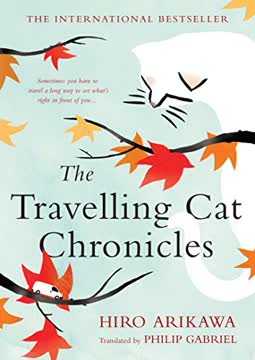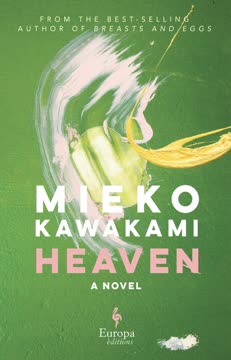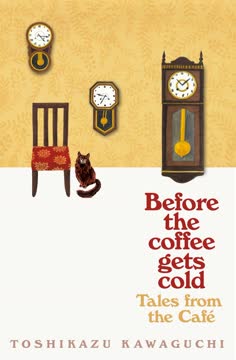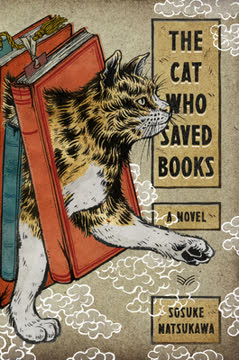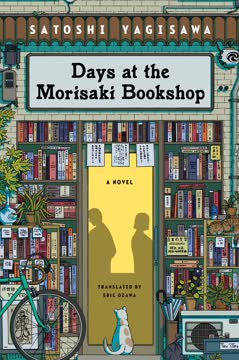Plot Summary
Diagnosis and Devil's Bargain
A thirty-year-old postman, living a quiet, unremarkable life with his cat Cabbage, is blindsided by a terminal brain tumor diagnosis. As he grapples with the news, a doppelgänger devil named Aloha appears, offering a Faustian bargain: for each thing the protagonist erases from the world, he gains one more day of life. The catch is existential—what is worth more, his own life or the things that give it meaning? The devil, cheerful and irreverent, sets the rules, and the protagonist, desperate to live, agrees to the first exchange.
The First Disappearance: Phones
The first item to disappear is the mobile phone. The protagonist is forced to confront how much of his life, memory, and relationships are mediated by technology. Without his phone, he feels both liberated and lost, especially when trying to reconnect with his first love. The absence of phones brings both inconvenience and a strange sense of peace, as people rediscover old habits and the world slows down. The protagonist's last phone call, made from memory, is to his ex-girlfriend, setting up a reunion and a journey into his past.
Revisiting First Love
Meeting his ex-girlfriend, the protagonist is forced to confront the reality of their relationship—its joys, its failures, and the mundane details that linger in memory. Their conversation is honest, sometimes painfully so, as they recall why they broke up and what they meant to each other. The protagonist realizes that technology, while connecting them, also kept them from truly knowing one another. The encounter is bittersweet, highlighting the importance of presence, memory, and the small, irreplaceable details of love.
The World Without Movies
The next sacrifice is movies, a passion that has shaped the protagonist's identity. He agonizes over the loss, reflecting on how films have provided comfort, escape, and a sense of self. With the help of his cinephile friend Tsutaya, he tries to choose a final film, only to realize that the essence of movies—and life—is not in the spectacle, but in the memories and emotions they evoke. The blank screen at his last private screening becomes a metaphor for the sum of his experiences: a life both ordinary and unique.
Friendship and Final Films
The protagonist's visit to Tsutaya, his movie-obsessed friend, is a poignant reminder of the power of shared passions. Their bond, forged over years of watching and discussing films, is tested by the impending erasure of movies. As they search for the perfect last film, they realize that what matters is not the film itself, but the act of sharing, remembering, and feeling together. Their tears are for the loss of movies, but also for the inevitability of all goodbyes.
The Blank Screen Epiphany
At the final screening, the protagonist chooses to watch nothing—a blank screen. This becomes a powerful symbol: life, like cinema, is a collection of moments, some vivid, some forgotten, all ultimately fleeting. He recalls his first movie with his parents, the warmth of family, and the realization that what endures is not the spectacle, but the love and presence of others. The blank screen is both an ending and an affirmation of the beauty in the ordinary.
Clocks Vanish, Time Unravels
With clocks gone, the protagonist experiences a world unmoored from time. The routines and anxieties that structure human life dissolve, replaced by a sense of freedom—and uncertainty. He reflects on how humans invented time to create order, but in doing so, surrendered freedom for security. The absence of clocks brings him closer to his cat, Cabbage, whose life is governed by natural rhythms rather than artificial schedules. The protagonist begins to see the world through Cabbage's eyes, appreciating the present moment.
Talking Cat, Forgotten Mother
Aloha's magic allows Cabbage to speak, leading to a surreal and touching exploration of memory and loss. Through conversations with Cabbage, the protagonist revisits his childhood, his mother's love, and the simple joys of daily life. Cabbage's fading memory of the protagonist's mother is a metaphor for the impermanence of all things, but also for the enduring nature of happiness and love. The protagonist realizes that what matters is not the details remembered, but the feeling of having been loved.
Memories at the Hot Spring
A photo album triggers memories of a final family trip to a hot spring, orchestrated by the protagonist's dying mother. The journey, fraught with logistical mishaps and emotional distance, becomes a moment of unexpected unity between father and son. The mother's true intention—to bring her fractured family together one last time—becomes clear only in retrospect. The protagonist is moved by the realization of his mother's selflessness and the quiet, enduring love that shaped his life.
The Choice: Cats or Self
Aloha demands the protagonist erase cats from the world in exchange for more life. Faced with the prospect of losing Cabbage, the protagonist is paralyzed by grief and indecision. He reflects on the role of cats in human life—as companions, as mirrors, as reminders of mortality and love. Ultimately, he cannot bring himself to erase cats, choosing instead to accept his own death. This act of self-sacrifice is a final affirmation of love's primacy over mere survival.
Mother's Letter, Son's Regret
A letter from his mother, entrusted to his ex-girlfriend, arrives at the moment of greatest despair. In it, she lists not her own wishes, but the things she loves about her son, offering comfort, affirmation, and a final request: to reconcile with his estranged father. The letter is a balm for the protagonist's regrets, reminding him that he is loved and that his life, though ordinary, has meaning. It is also a call to action, prompting him to seek forgiveness and connection before it is too late.
Accepting Mortality
With the devil's bargain ended, the protagonist prepares for his death. He cleans his apartment, discards old memories, and contemplates the meaning of his life. He realizes that regrets are inevitable, but they are also proof of having lived. The beauty of life lies not in perfection, but in the accumulation of small joys, sorrows, and connections. He finds peace in accepting his mortality and the limits of his existence.
The Devil's True Face
Aloha reveals that he is not an external being, but a manifestation of the protagonist's own regrets, desires, and unlived possibilities. The devil is the self that might have been, the sum of all the roads not taken. This revelation is both unsettling and liberating—the protagonist sees that his choices, even his failures, are what make him who he is. He embraces his imperfections and the life he has lived, however incomplete.
The Last Letter
The protagonist writes a long letter to his father, explaining everything he has experienced and felt. The act of writing is both a confession and a gift—a way to bridge the distance that has grown between them. He entrusts Cabbage to his father, hoping that the cat will bring comfort and connection. The letter is a testament to the enduring power of love, memory, and forgiveness.
Reunion and Reconciliation
Dressed in his postman's uniform, the protagonist sets out to deliver his final letter in person. The journey is both literal and symbolic—a return to his origins, an attempt to heal old wounds, and a final act of agency before death. He is determined to see his father, to say thank you, and to say goodbye. The act of reconciliation is the protagonist's last gift to himself and to those he loves.
Delivering Goodbye
Arriving at his father's house, the protagonist prepares to deliver his letter and Cabbage. The act is simple, but profound—a gesture of love, humility, and acceptance. In this moment, the protagonist finds closure, not only for himself, but for his family. He is at peace with his life, his choices, and his impending death.
The World Moves On
As the protagonist's story ends, the world continues. The things he loved—cats, movies, memories—remain, not because they are eternal, but because they are cherished. The protagonist's life, though brief and unremarkable by worldly standards, has left an indelible mark on those he loved. The world moves on, but the meaning of a life is found in the connections, the memories, and the love that persist.
Characters
The Protagonist (Unnamed Postman)
A thirty-year-old postman whose life is defined by routine, solitude, and a quiet love for movies and his cat. His relationships are marked by distance—estranged from his father, haunted by the memory of his mother, and nostalgic for a lost love. Psychologically, he is introspective, self-deprecating, and prone to regret, yet capable of deep empathy and self-sacrifice. His journey is one of reluctant self-discovery, forced by mortality to confront what truly matters. He evolves from passive observer to active participant, ultimately choosing love and connection over self-preservation.
Aloha (The Devil)
A whimsical, irreverent figure who looks exactly like the protagonist but dresses flamboyantly and acts with reckless abandon. Aloha is both tempter and mirror, offering the protagonist a series of existential bargains. Psychologically, he represents the protagonist's shadow self—the sum of his regrets, unlived desires, and alternate possibilities. Aloha's role is to challenge, provoke, and ultimately reveal the truth that the devil is not an external force, but an aspect of the self.
Cabbage (The Cat)
Cabbage is more than a pet; he is the protagonist's confidant, comfort, and link to his mother. When magically granted speech, Cabbage becomes a vehicle for exploring memory, happiness, and the limits of understanding between species. Psychologically, Cabbage embodies the unconditional presence and acceptance that humans crave. His eventual silence and disappearance force the protagonist to confront loss, love, and the meaning of companionship.
The Mother
Though deceased, the mother's influence pervades the narrative. Her wisdom, warmth, and self-sacrifice shape the protagonist's values and choices. Her posthumous letter is a catalyst for healing and acceptance, offering affirmation and a final request for reconciliation. Psychologically, she represents the ideal of unconditional love and the enduring impact of parental care.
The Father
A clockmaker whose emotional reserve and focus on work create a gulf between him and his son. The father's love is expressed through actions rather than words—gifts of stamps, repairing watches, and caring for cats. Psychologically, he embodies the difficulty of expressing emotion, the pain of regret, and the possibility of forgiveness. The protagonist's journey toward reconciliation with his father is central to his acceptance of mortality.
The Ex-Girlfriend
A philosophy student and cinephile, she represents the protagonist's youthful hopes, romantic ideals, and the bittersweet nature of memory. Their reunion is marked by honesty, humor, and the recognition of irreconcilable differences. Psychologically, she is both a source of comfort and a reminder of the limits of connection. Her role is to prompt the protagonist's self-examination and to deliver his mother's letter at a crucial moment.
Tsutaya (Movie Friend)
A shy, obsessive cinephile whose friendship with the protagonist is built on a shared love of film. Tsutaya's encyclopedic knowledge and emotional vulnerability provide comfort and perspective as movies disappear from the world. Psychologically, he represents the importance of shared passions and the healing power of friendship.
Lettuce (First Cat)
Lettuce's death is a formative experience for both the protagonist and his mother, teaching them about grief, love, and the impermanence of life. Lettuce's memory lingers as a reminder of the cycles of attachment and loss.
The Ex-Girlfriend's Role as Messenger
By delivering the mother's letter, she becomes a conduit for healing and closure, connecting the protagonist to his family and his own sense of self-worth.
The Devil as Doppelgänger
Aloha's true identity as the protagonist's alternate self underscores the psychological theme that our greatest temptations and regrets are internal, not external.
Plot Devices
The Devil's Bargain
The central device is the devil's offer: for each thing erased from the world, the protagonist gains a day of life. This structure forces the protagonist to confront the value of the things he takes for granted—technology, art, time, companionship—and, ultimately, his own existence. The bargain is both literal and metaphorical, serving as a lens for examining what makes life meaningful.
Gradual Disappearance
Each disappearance—phones, movies, clocks, cats—raises the emotional and philosophical stakes. The progression moves from the trivial to the essential, mirroring the protagonist's journey from superficial desires to core values. The device also allows for exploration of how loss shapes identity and meaning.
Doppelgänger/Shadow Self
Aloha's role as the protagonist's double externalizes the internal struggle between self-preservation and self-transcendence. The revelation that the devil is a projection of the protagonist's own regrets and unlived possibilities adds psychological complexity and underscores the theme of self-acceptance.
Letters and Memory
Letters—both the mother's and the protagonist's—serve as vehicles for confession, affirmation, and reconciliation. They bridge the gaps between past and present, parent and child, self and other. The act of writing becomes an act of love and legacy.
Magical Realism
The narrative employs magical realism to explore existential questions in a whimsical, accessible way. The talking cat, the devil's bargains, and the erasure of fundamental aspects of life create a dreamlike atmosphere that allows for deep psychological and philosophical exploration without losing emotional resonance.
Foreshadowing and Circular Structure
The story is structured around a week, echoing the biblical creation story and underscoring themes of creation, destruction, and rest. Recurring motifs—lists, letters, memories—create a sense of inevitability and closure.
Analysis
Last updated:
FAQ
0. Synopsis & Basic Details
What is If Cats Disappeared from the World about?
- A Dying Postman's Bargain: The story follows a thirty-year-old unnamed postman who receives a terminal brain tumor diagnosis, giving him only days to live. A doppelgänger devil, Aloha, appears, offering him a Faustian bargain: for every item he chooses to erase from the world, he gains one extra day of life.
- Existential Journey of Loss: Over seven days, the protagonist grapples with profound choices, making phones, movies, and clocks disappear. Each loss forces him to confront the true value of these things, the memories associated with them, and the impact on his relationships and identity.
- Rediscovering Life's Meaning: Through these disappearances and encounters with his ex-girlfriend, best friend, and the memory of his mother, he embarks on a journey of self-discovery, ultimately realizing that true meaning lies not in extending life at any cost, but in cherishing love, connection, and the ordinary moments that make life beautiful.
Why should I read If Cats Disappeared from the World?
- Profound Emotional Resonance: The novel offers a deeply moving exploration of grief, love, and the human condition, prompting readers to reflect on their own lives and what truly matters. It's a poignant meditation on mortality and the beauty found in everyday existence.
- Unique Magical Realism: Genki Kawamura masterfully blends the mundane with the fantastical, creating a world where a talking cat and a doppelgänger devil serve as catalysts for profound introspection. This unique narrative style makes complex philosophical questions accessible and engaging.
- Universal Themes Explored: Readers will find themselves contemplating themes of memory, regret, the nature of time, the impact of technology, and the enduring power of family and friendship, making it a thought-provoking read that stays with you long after the final page.
What is the background of If Cats Disappeared from the World?
- Contemporary Japanese Setting: The story is set in modern-day Japan, featuring familiar elements like bustling train commutes, local shops, and a quiet, introspective protagonist, grounding the fantastical elements in a relatable, everyday reality. The cultural context of a postman's role, the importance of family, and subtle social anxieties are woven throughout.
- Philosophical & Existential Roots: The narrative draws heavily on existential philosophy, particularly the idea of confronting mortality to find meaning, echoing themes found in works like "The Myth of Sisyphus." The devil's bargain itself is a modern take on the classic Faustian legend, exploring human desires and the cost of life.
- Author's Creative Vision: Genki Kawamura, known for his work as a film producer, brings a cinematic quality to his writing, evident in the vivid imagery and the "montage" of memories the protagonist experiences. His background likely influences the novel's focus on the power of movies and storytelling.
What are the most memorable quotes in If Cats Disappeared from the World?
- "In order to gain something, you have to lose something.": This recurring mantra, first spoken by the protagonist's mother and later echoed by the devil, encapsulates the central theme of the novel. It highlights the inherent trade-offs in life and the painful but necessary process of letting go to appreciate what remains.
- "Life is a tragedy when seen in close-up, but a comedy in long shot.": Attributed to Charlie Chaplin and appearing in the protagonist's dream, this quote offers a profound perspective on life's dual nature. It suggests that while individual moments of suffering can be overwhelming, a broader view reveals the inherent humor and beauty in the human experience, a key insight for the protagonist facing death.
- "You don't have a family. You make a family.": This powerful realization comes to the protagonist as he reflects on his estranged relationship with his father. It underscores the active effort required to build and maintain connections, emphasizing that relationships are not merely given but are continually forged through shared experiences and conscious effort.
What writing style, narrative choices, and literary techniques does Genki Kawamura use?
- Intimate First-Person Narration: The story is told from the unnamed protagonist's perspective, creating a deeply personal and introspective tone. This allows readers direct access to his anxieties, regrets, and evolving understanding of life, fostering strong empathy and connection.
- Magical Realism & Allegory: Kawamura seamlessly integrates fantastical elements, such as a talking cat and a doppelgänger devil, into an otherwise ordinary world. These elements serve as allegories, externalizing the protagonist's internal struggles and philosophical questions about existence, choice, and meaning.
- Circular & Reflective Structure: The narrative unfolds over seven days, mirroring the biblical creation story, which the devil explicitly references. This structure, combined with frequent flashbacks and internal monologues, creates a reflective journey where past memories are constantly re-evaluated in the light of impending death, emphasizing the cyclical nature of life and loss.
1. Hidden Details & Subtle Connections
What are some minor details that add significant meaning?
- The Devil's Shifting Hawaiian Shirts: Aloha's changing Hawaiian shirts, from palm trees and cars to dolphins and surfboards, subtly reflect his whimsical, transient nature and his role as a projection of the protagonist's desires. It highlights the devil's superficiality and his ability to adapt to the protagonist's subconscious, rather than being a fixed, terrifying entity.
- Specific Snack Brands (Chips Ahoy, Butterfingers): The devil's confusion over "Chips Ahoy" and "Butterfingers" when chocolate is first considered for erasure, and his subsequent delight in tasting them, humanizes him and underscores the arbitrary nature of human creations and names. It also subtly questions the inherent value of things, as even the devil is swayed by simple pleasures.
- The Postmaster's Fluctuating Concern: The postmaster's initial worry about the protagonist's health, followed by annoyance at his lateness, then granting sick leave, reflects the mundane yet complex reality of human relationships even in the face of tragedy. It shows how everyday concerns and professional obligations persist, even as the protagonist faces an existential crisis, highlighting the contrast between his internal world and external expectations.
What are some subtle foreshadowing and callbacks?
- Mother's Allergy Cure & "Gain/Lose" Mantra: The mother's cat allergy disappearing after she says, "In order to gain something, you have to lose something," subtly foreshadows the devil's bargain. This early, seemingly miraculous event establishes the core principle of exchange long before the devil's appearance, embedding the theme of sacrifice and consequence into the narrative's fabric.
- Doraemon's Pebble Hat Analogy: The protagonist's recollection of Doraemon's pebble hat, which makes Nobita unnoticed rather than truly disappear, offers a meta-commentary on the nature of the devil's erasures. It suggests that the "disappearances" might not be absolute annihilation but rather a collective forgetting or a shift in perception, leaving the true impact ambiguous and open to interpretation.
- Lettuce's Red Collar Becoming Lifeless: The description of Lettuce's red collar, once "alive" but becoming a "cold, lifeless object" after his death, foreshadows the protagonist's later experience with his mother's watch. This detail emphasizes how objects, imbued with emotional significance, lose their vitality when the person or being connected to them is gone, highlighting the profound impact of loss on the material world.
What are some unexpected character connections?
- Ex-Girlfriend as Mother's Confidante: The revelation that the ex-girlfriend visited the protagonist's mother in the hospital and was entrusted with her final letter creates an unexpected, deep bond between them. This connection transcends the romantic relationship, positioning the ex-girlfriend as a keeper of family secrets and a conduit for the mother's enduring love, ultimately facilitating the protagonist's healing.
- Tsutaya's Hidden Emotional Depth: The usually shy and reserved Tsutaya's uncontrollable crying when the protagonist tells him about his impending death reveals a profound emotional connection beyond their shared love for movies. This unexpected display of vulnerability from a minor character underscores the deep impact the protagonist has had on others, challenging his self-perception of being unremarkable.
- The Devil's "Human" Qualities: Aloha's unexpected delight in chocolate, his playful roughhousing with Cabbage, and his "pathetic wink" reveal a surprising, almost human, side to the devil. This connection blurs the lines between good and evil, suggesting that even the embodiment of regret possesses relatable desires and a capacity for enjoyment, making him less of a purely malevolent force and more of a complex, internal projection.
Who are the most significant supporting characters?
- The Mother: Posthumous Guide & Emotional Anchor: Though deceased, the mother's influence is paramount, shaping the protagonist's values and ultimately guiding his final decisions through her wisdom and posthumous letter. Her selfless love and efforts to reconcile her family are the emotional core of the story, providing the protagonist with a blueprint for living meaningfully.
- The Ex-Girlfriend: Catalyst for Self-Reflection & Messenger of Truth: She serves as a crucial mirror for the protagonist, forcing him to confront his past, his flaws, and the true nature of their relationship. Her role in delivering the mother's letter makes her a pivotal figure in his journey towards self-acceptance and reconciliation, bridging his past and present.
- Tsutaya (Movie Friend): Embodiment of Shared Passion & Unconditional Support: Tsutaya represents the power of shared interests and loyal friendship. His unwavering passion for movies and his raw emotional response to the protagonist's news highlight the importance of connection and the comfort found in genuine camaraderie, even in the face of profound loss.
2. Psychological, Emotional, & Relational Analysis
What are some unspoken motivations of the characters?
- Protagonist's Avoidance of Father: His long-standing estrangement from his father, despite living nearby, stems from a deep-seated resentment and misunderstanding surrounding his mother's death. He blames his father for prioritizing the watch repair over being present, masking his own guilt and inability to cope with his mother's suffering.
- Mother's Hot Spring Trip: The mother's "last wish" for a family trip to the hot springs was not solely for her own enjoyment, but a deliberate, unspoken attempt to reconcile her estranged husband and son. She orchestrated this final shared experience to mend their fractured relationship before her death, a testament to her enduring love and desire for family unity.
- Ex-Girlfriend's "Harsh" Honesty: The ex-girlfriend's blunt recounting of the protagonist's flaws during their reunion, though initially painful, is an unspoken act of love and a final attempt to help him understand himself. By fulfilling their old "bargain" to tell each other what they disliked, she provides him with honest self-reflection at a critical juncture, pushing him towards growth before his end.
What psychological complexities do the characters exhibit?
- Protagonist's Regret as a Driving Force: The protagonist is deeply complex, driven by a pervasive sense of regret for unlived experiences, superficial relationships, and missed opportunities. This regret is externalized by Aloha, who represents "the person you could have been," forcing the protagonist to confront his choices and ultimately find peace in his imperfect life.
- Father's Silent Love & Communication Barriers: The father's inability to express affection verbally, instead showing love through actions like repairing the mother's watch or giving stamps, highlights a common psychological barrier in relationships. His stoicism, initially perceived as indifference by the protagonist, is later understood as a deeply personal, albeit flawed, way of caring.
- Cabbage's Selective Memory & Emotional Recall: Cabbage's ability to remember the feeling of happiness from the hot spring trip, despite forgetting the specific details or even the mother herself, illustrates the psychological phenomenon of emotional memory. It suggests that core feelings can persist even when factual recall fades, emphasizing the enduring impact of positive experiences.
What are the major emotional turning points?
- The Skydiving Experience's Anti-Climax: The protagonist's first "bucket list" item, skydiving, is a major emotional turning point because it fails to deliver the expected epiphany or liberation. Instead, it brings terror and regret, forcing him to realize that manufactured thrills don't provide meaning, and that his true desires are far more subtle and internal.
- Realizing Superficial Phone Connections: Scrolling through his phone contacts and finding no one truly meaningful to call for his "last call" is a devastating emotional turning point. This moment of profound loneliness and the realization of superficial relationships forces him to confront his isolation and the true cost of relying on technology for connection.
- Tsutaya's Tears & Shared Vulnerability: Witnessing his shy friend Tsutaya openly weep over the impending loss of movies and the protagonist's death is a powerful emotional catalyst. This shared moment of raw vulnerability allows the protagonist to finally release his own bottled-up emotions, realizing the depth of his friendships and the importance of authentic connection.
How do relationship dynamics evolve?
- Protagonist & Cabbage: From Owner to Deep Companion: The relationship with Cabbage evolves from a simple pet-owner dynamic to a profound, almost symbiotic companionship, especially when Cabbage gains the ability to speak. This transformation highlights the cat's role as a confidante and a living link to his mother, ultimately becoming a symbol of unconditional love and the reason for the protagonist's final sacrifice.
- Protagonist & Ex-Girlfriend: From Nostalgia to Mature Understanding: Their reunion shifts from a nostalgic revisiting of past romance to a mature, honest exchange about their shared history and individual growth. The ex-girlfriend's role in delivering the mother's letter solidifies their bond as one of enduring care and mutual respect, transcending their romantic past into a platonic, supportive connection.
- Protagonist & Father: From Estrangement to Reconciliation: The most significant relational evolution is between the protagonist and his father. Initially marked by years of silence and resentment, their bond is slowly healed through the mother's posthumous influence and the protagonist's final act of delivering his letter in person. This journey culminates in understanding and forgiveness, transforming a broken relationship into one of acceptance and love.
4. Interpretation & Debate
Which parts of the story remain ambiguous or open-ended?
- The True Nature of Disappearance: The story leaves it ambiguous whether items truly vanish from existence or if people simply lose the ability to perceive or remember them, as suggested by the Doraemon "pebble hat" analogy. This raises questions about the nature of reality and collective consciousness, leaving readers to ponder the depth of the devil's power.
- The Protagonist's Immediate Fate: While the protagonist accepts his death and delivers his letter, the exact moment or manner of his passing is not explicitly shown. The ending, "Goodbye, World," implies his imminent demise, but the narrative focuses on the emotional closure rather than the physical event, leaving his final moments to the reader's imagination.
- The Devil's Ultimate Intentions: Aloha's character remains complex and somewhat enigmatic. While he acts as a catalyst for the protagonist's self-discovery, his motivations are a mix of a "bet with God," personal amusement, and a desire to understand humans. It's debatable whether he is truly malevolent, a benevolent trickster, or simply a mirror reflecting the protagonist's internal struggles.
What are some debatable, controversial scenes or moments in If Cats Disappeared from the World?
- The Devil's Arbitrary Choices for Erasure: Aloha's "mood" dictating what disappears, such as his initial decision to erase chocolate based on taste, can be seen as a controversial display of power. This highlights the arbitrary nature of fate and the protagonist's lack of control, forcing readers to question the fairness of the bargain and the value placed on human life.
- The Father's Focus on the Watch During Mother's Death: The father's decision to repair the mother's watch in her final hours, rather than being by her side, is a highly debatable moment. While the mother interprets it as a form of love, the protagonist initially sees it as a cruel act of detachment, sparking a long-standing rift. This scene challenges conventional notions of grief and care, inviting discussion on different expressions of love.
- The Protagonist's Initial "Useless" List of Desires: The protagonist's first list of "10 Things I Want to Do Before I Die," filled with fantastical and superficial desires (e.g., "ride on a Transformer's back"), is presented as pathetic by the devil. This moment can be controversial as it critiques common bucket-list clichés, prompting readers to question what constitutes a truly meaningful desire in the face of mortality.
If Cats Disappeared from the World Ending Explained: How It Ends & What It Means
- Acceptance of Mortality and Self-Worth: The ending of If Cats Disappeared from the World sees the protagonist choosing to accept his impending death rather than sacrificing cats for more time. This pivotal decision signifies his profound realization that life's value lies not in its duration, but in the quality of its connections and the love shared, embracing his "short side" of life as meaningful.
- Reconciliation and Legacy through Love: His final act is to write a long, heartfelt letter to his estranged father, explaining his journey and entrusting Cabbage to him. This act of reconciliation, driven by his mother's posthumous wish, symbolizes healing old wounds and creating a legacy of love and understanding, ensuring his memory lives on through his family and the cat.
- The Beauty of Regret and Imperfection: The protagonist finds peace in his regrets, understanding them as "proof of having lived." The devil's revelation that he is the "unlived self" allows the protagonist to embrace his actual life, with all its imperfections and unfulfilled dreams, as complete and beautiful. The ending is a poignant affirmation that a life, however ordinary or brief, is rich with meaning when lived with love and awareness.
Review Summary
If Cats Disappeared from the World received mixed reviews, with many praising its emotional depth and thought-provoking themes about life, death, and human connections. Readers appreciated the unique premise and the exploration of what truly matters. Some found the writing style simplistic or the translation clunky. The book's portrayal of cats resonated with many, while others felt the story was overly sentimental. Despite criticisms, many readers were moved by the novel's reflections on mortality and the value of everyday experiences.
Similar Books
Download PDF
Download EPUB
.epub digital book format is ideal for reading ebooks on phones, tablets, and e-readers.
